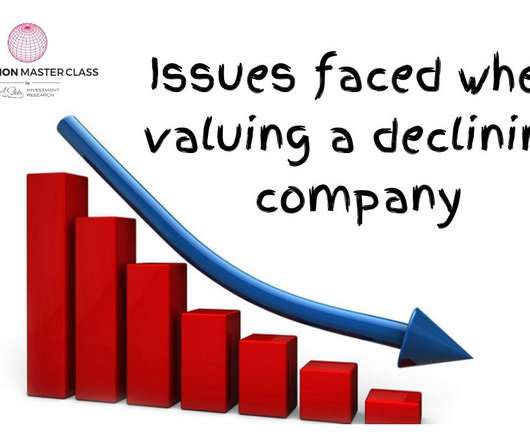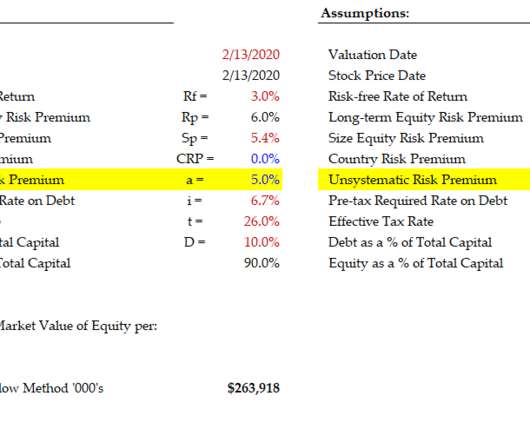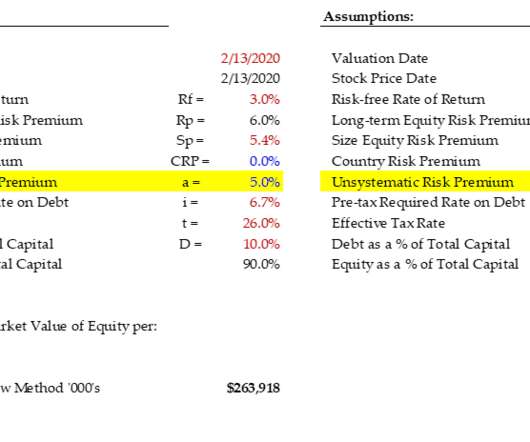Discount Rate—Explanation, Definition and Examples
Valutico
FEBRUARY 27, 2024
The Discounted Cash Flow (DCF) method uses the discount rate to consider all future cash flows of a business when calculating its current value. In DCF analysis, the Weighted Average Cost of Capital (WACC), representing the average return required by all stakeholders, is commonly used as the discount rate.












Let's personalize your content